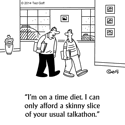Is there a huge business opportunity at the bottom of the telecommunications market?
Everyone has a cellphone, right? Some of us have two or more. Nobody needs cable or satellite; we all have that. Maybe there's an opportunity to sell more people broadband, who knows?
At any rate, it seems as if every American who uses telecom services has more than they need. But averages can be deceiving. America's roughly 70% wireless penetration rate includes upper-income rates of 100%--everybody has a cellphone...and lower-income rates below 50%.
Hamilton Sekino, partner in Diamond Consultants' telecom practice, explored opportunities selling telecom service to the lower and lower-middle income brackets at this month's Next Generation Mobile Partnerships Conference presented by Informa Telecoms & Media.
It was a fascinating presentation. Hamilton pointed out that marketing for most telecom and cable operators focused on high-end customers. And while prepaid cellular in the US appeals to low-income customers, its high churn rates make it a daunting business.
Diamond's proposition involves someone reselling a modest bundle of telecom services (video, broadband, wireless, wireline) at a discount to this market. An example package is:
$99.99 monthly fee
unlimited local wireless (a la Cricket or MetroPCS)
unlimited local wireline using VoIP
40 channels of video
1.5Mbps broadband
The key success factor is to be able to minimize cost of acquisition (to 1 to 1.5 times monthly subscriber revenue) and maximize discounts from underlying operators. (I'd add that it would also be important to keep operational costs low, by sticking to very simple plans, billing and payment.)
Who can do this? According to Diamond, a retailer like Wal-Mart would be a perfect fit, given its appeal to low-middle income segments and ability to distribute cheaply. Or perhaps an internet portal like Google or Yahoo, or a video company like DirecTV or Dish. In the right hands, it could be a multi-billion dollar business, according to their analysis.
The response by the conference attendees: much skepticism. But I find something very intriguing about this idea. There's a market, with money (not a lot) to spend, whose needs are not being met. There are companies that could provide service to this market. Stay tuned to see if this proposition becomes a product, and if the product becomes a success.![]() wireless
wireless ![]() mobile
mobile ![]() telecommunications
telecommunications ![]() strategy
strategy ![]() innovation
innovation






